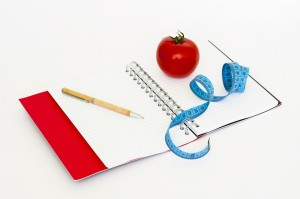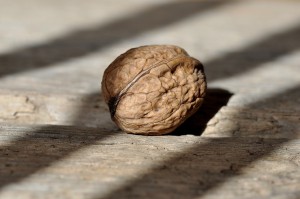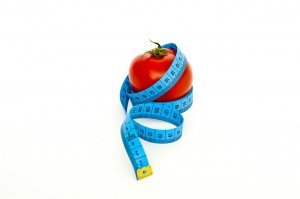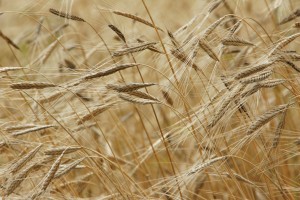Weight Loss Motivation Guidelines
Personal motivation is the foundation of all weight loss success. No matter how healthy a diet-plan, it won’t help anyone lose weight unless they are motivated to change their eating and  exercise habits. A major obstacle to diet-compliance is boredom. Anne Collins explains how to overcome it by adopting new thinking habits that make weight loss a lot easier.
exercise habits. A major obstacle to diet-compliance is boredom. Anne Collins explains how to overcome it by adopting new thinking habits that make weight loss a lot easier.
Introduction
If there is one thing that all dietitians and obesity experts agree on, it is that personal motivation is the foundation of all weight loss success. No matter how healthy the diet-plan, or what combination of calories and nutrition it contains, it won’t help anyone lose weight unless they follow it for long enough. Their willingness to do so depends entirely on how motivated they are to change their eating and exercise habits in order to achieve their weight loss goals.
Motivation Advice Hard To Find
The Internet offers a bewildering array of diets and weight loss eating plans, but advice on motivation when dieting is in extremely short supply. Given the strong link between diet-compliance and motivation, this lack of motivational help is surprising to say the least. It may stem from the fact that many diets are created by people who lack hands-on experience of helping people to manage their weight. Perhaps they see weight loss as a biological rather than a human process. If so, I think it’s a mistake.
Motivating Yourself To Lose Weight
I tell all my clients that starting a weight loss diet is like starting a journey. And like any journey it requires preparation. We need to look ahead and plan how to overcome problems that occur along the way. By doing this we take control of the process and greatly increase our chances of success.
Unfortunately, many dieters don’t plan ahead. Instead, they take things as they come, and rely upon two things: their initial enthusiasm, and (when this wears off) their willpower. But enthusiasm and willpower aren’t enough to overcome the temptations and difficulties which we face when we try to change our eating habits and lifestyle.
Stop for a moment and imagine taking your family on a camping trip. Do you rely on your enthusiasm and willpower for food and shelter? Of course not. In all probability you spend hours beforehand carefully packing and preparing for every eventuality, and the whole trip is carefully planned out in advance.
Yet when you start a diet-journey, many of you set off without any kind of planning or preparation. It’s as if you are convinced that everything will go smoothly. But let’s face it, what diet ever runs smoothly? Answer: none! So what happens when we encounter a big problem? Answer: we wobble, and often quit.
We Need To Plan New Thinking Habits
Planning a diet-journey doesn’t involve packing equipment, it involves packing “new thoughts”. We need to rehearse and adopt new ways of thinking in order to overcome problems during our journey. This isn’t psycho-babble – this is plain common sense. After all, successful dieting is largely a matter of motivation and attitude. It’s about what goes on between our ears!
The Most Common Dieting Problem
The most common problem we face when dieting is boredom. This typically occurs when our initial enthusiasm for losing weight wears off, and we become tired of watching what we eat. We become dispirited, and slightly depressed at the idea of having to maintain our “sensible eating habits” while everyone else seems to be having a good time.
Losing Direction Leads To Boredom
We get bored when we lose our sense of direction. So to overcome it, we need to reestablish exactly where we are going. Remember, dieting is not an aimless process, it’s a journey from A to B. Here’s how we think when we lose direction:
“I’m really bored with dieting, it’s such a pain. I don’t have any freedom any more. I can’t eat this, I can’t eat that… I’m fed up. I can’t share food with the girls at work, I can’t eat at my favorite restaurants, I have to keep saying No to food when I visit friends, I have to watch my family eating in front of me, I don’t have time to exercise properly, I’m never going to lose weight and I’m feeling really miserable. Heck! Life is too short for this…”
This kind of thinking is totally demotivating. It focuses exclusively on the negative aspects of dieting and signals complete aimlessness. No weight loss goal is achievable when we think like this.
A Better Way of Thinking
Now let me show you some better alternatives. Please compare them with the above example.
Example 1
“Hmm, my diet isn’t going so good. But I’m not going to make excuses. I’ve wasted enough time making excuses to myself. From now on, no matter what happens, I’m going to be honest with myself. So what do I want? I want to lose weight and get myself into shape. Why? Because I really want that beach holiday (or other very selfish goal) which I promised myself. I want it so bad I can touch it! Okay, so I need to learn how to eat properly – big deal! I can easily do this if I put my mind to it. Heck! Eating good food isn’t difficult. What’s difficult is seeing myself being overweight for the rest of my life. I want something better. Something a lot better than a fistful of nachos or a dollop of fatty dessert.”
Example 2
“Hmm, my diet isn’t going so good. So let me remind myself why I’m dieting. All my life I’ve been eating to please other people. My mom said “eat this”, so I ate it. My school friends said “have some of this”, so I had lots. My work colleagues now say “have a slice of this”, so I have two! And my kids say “you must try this”, so I try it. And every time I make an effort to lose weight, everyone says “forget about your diet, eat some of this” so I do. Well that’s enough! No more eating to please other people. Today I’m going to start eating to please me. And what pleases me is the idea of wearing a size (?) dress to my daughter’s wedding (or other very selfish goal). I realise I need to eat properly, but this is a ridiculously tiny price to pay for achieving my goal. Heck! Eating good food isn’t difficult. What’s difficult is carrying my excess weight around all day. I want something better. Something a lot better than a 4-cheese pizza or a box of cookies.”
Example 3
“Hmm, my diet isn’t going as smoothly as I thought it would. Never mind, I’m sure this is quite normal. I can’t expect to change my regular eating habits without a few hiccups along the way. Besides, I’m looking for more than the few minutes of pleasure I get from filling my stomach with junk. I want a lifetime of pleasure – real pleasure from looking good and being taken seriously and who knows, maybe finding a great partner. I know other people see me as a fat person – goodness, at times I do too! – but this is exactly WHY I want to change. I’m tired of being fat. Real tired. And if this means learning how to eat good food, then let’s do it! And when it gets tough I’m going to login to Anne Collins forum and get help. All I know is, I want to make it happen!”
Example 4
“Hmm, my diet isn’t going as smoothly as I thought it would. This morning I watched my colleagues eat a whole birthday cake – it looked delicious – and I sat there feeling miserable and deprived. Then I went for lunch with a friend and chose a tuna salad while she ate half a pizza followed by two slices of cheesecake. It was torture! But then I started thinking to myself “what’s more important – a few slices of cheesecake, or a really lean shape?” And I decided that looking good was what I really wanted. I know that it’s not going to happen overnight, but if I can persevere and learn good eating habits along the way, I know I’m gonna make it…”
Example 5
“Hmm, my diet isn’t going as smoothly as I thought it would. But at least it’s not a race. So who cares if I have a few wobbly moments, as long as I get where I want to go. At 26 I’m in the prime of my life, and I want to make the most of it. I’m tired of my slim friends getting all the best guys. I want to turn a few heads myself. I want the attention and I want to be taken seriously, and if I have to spend 12 months dieting – heck! I’m gonna do it. Last week I saw a friend of mine in hospital who lost a leg in a car crash. The doctors say it’s going to take her 12 months to relearn how to walk. Now that is tough. By comparison, my journey is easy. And as long as I keep reminding myself of this, I’ll be fine.”
Points To Remember
1. A diet is a journey from A to B.
2. Feeling bored is a sign we are losing our direction.
3. When we lose direction we need to regain it, fast!
4. The way to regain direction is to remind yourself why you are dieting.
5. You are dieting because you want something better than a plate of fattening food.
Getting Help To Lose Weight
Changing our eating habits is much easier when we get support from other people. So make sure your online weight management plan includes membership of a forum. Because only people can offer you the sort of encouragement you need to achieve your personal weight loss goals.
PS: To learn how I lost 40 lbs. myself, click here to hear my story.
 Small movements will add up over time to lots of calories. The trick is to keep moving throughout your day. Write the word ‘move’ on post-it notes and put them in places you’ll notice them when you’re sitting still. Then, take every opportunity to move – here’s some ideas for burning extra calories:
Small movements will add up over time to lots of calories. The trick is to keep moving throughout your day. Write the word ‘move’ on post-it notes and put them in places you’ll notice them when you’re sitting still. Then, take every opportunity to move – here’s some ideas for burning extra calories:







